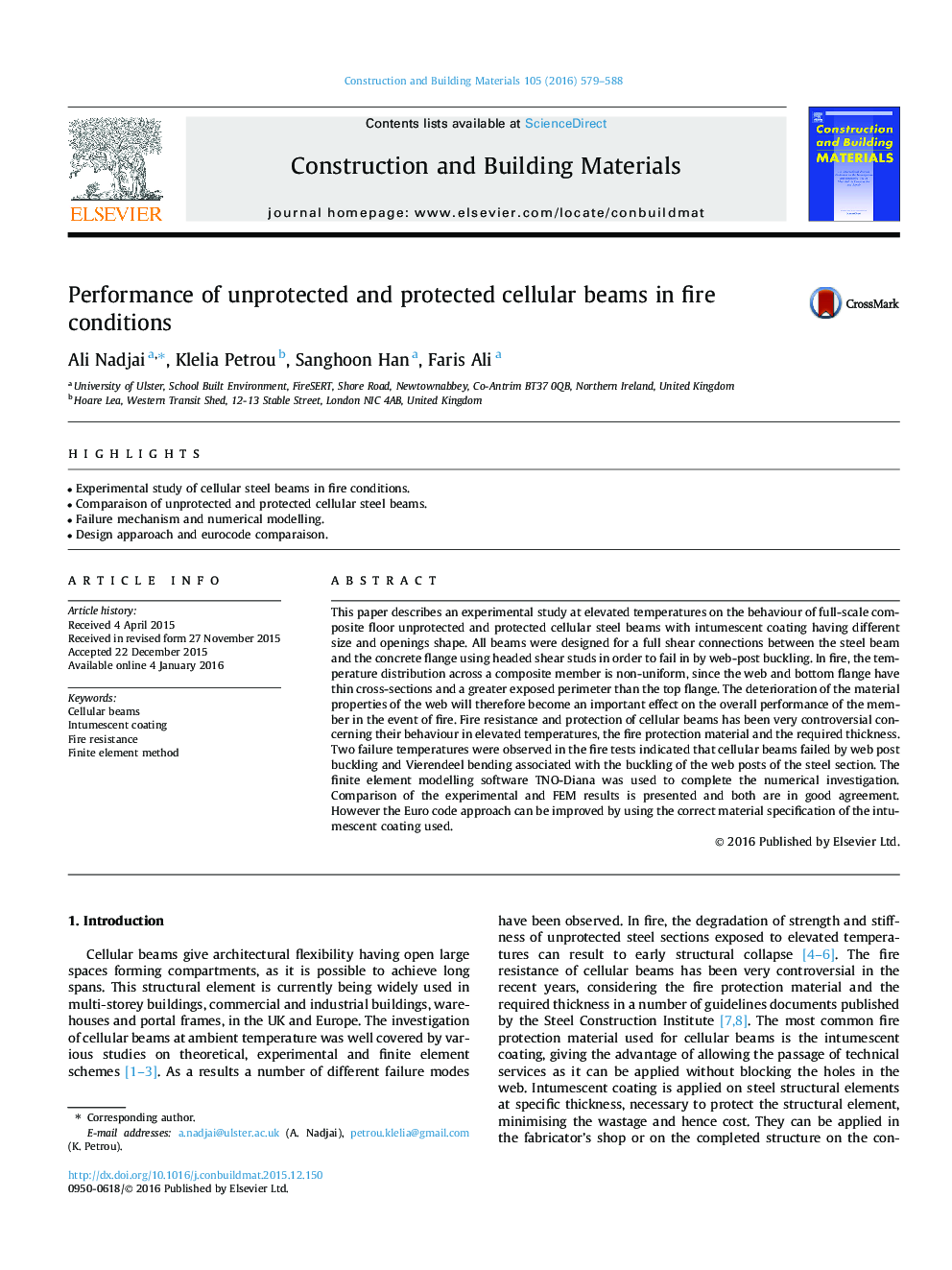| Article ID | Journal | Published Year | Pages | File Type |
|---|---|---|---|---|
| 6719329 | Construction and Building Materials | 2016 | 10 Pages |
Abstract
This paper describes an experimental study at elevated temperatures on the behaviour of full-scale composite floor unprotected and protected cellular steel beams with intumescent coating having different size and openings shape. All beams were designed for a full shear connections between the steel beam and the concrete flange using headed shear studs in order to fail in by web-post buckling. In fire, the temperature distribution across a composite member is non-uniform, since the web and bottom flange have thin cross-sections and a greater exposed perimeter than the top flange. The deterioration of the material properties of the web will therefore become an important effect on the overall performance of the member in the event of fire. Fire resistance and protection of cellular beams has been very controversial concerning their behaviour in elevated temperatures, the fire protection material and the required thickness. Two failure temperatures were observed in the fire tests indicated that cellular beams failed by web post buckling and Vierendeel bending associated with the buckling of the web posts of the steel section. The finite element modelling software TNO-Diana was used to complete the numerical investigation. Comparison of the experimental and FEM results is presented and both are in good agreement. However the Euro code approach can be improved by using the correct material specification of the intumescent coating used.
Related Topics
Physical Sciences and Engineering
Engineering
Civil and Structural Engineering
Authors
Ali Nadjai, Klelia Petrou, Sanghoon Han, Faris Ali,
